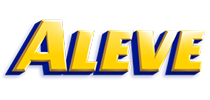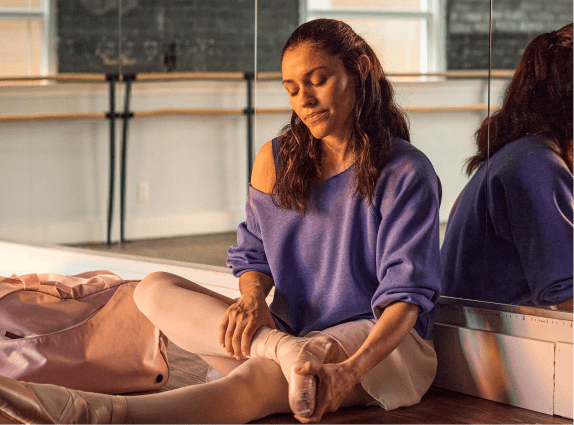The information provided on this site is for educational purposes only and is not a substitute for professional medical advice. Please consult a healthcare professional for medical advice, diagnosis and treatment.
If you suffer from back pain, you're far from alone — about 80% of people will experience back pain at some point. In fact, in the United States, back pain is the No. 1 cause of disability in men over age 45, and it's the second most common reason people visit the doctor.
Whether back pain comes on suddenly or occurs on a regular basis, it can feel as though your life is being put on hold. The more you learn about back pain, the better you can manage it and get back to living your life fully.
BACK PAIN SYMPTOMS
SYMPTOMS MAY INCLUDE:
By targeting muscles in both neck and shoulders, a seated twist is an effective stretch if you're experiencing pain in either area.
- Back pain that ebbs and flows or comes and goes
- Pain radiating from your back to the hips, legs, abdomen or buttocks
- Increasing pain while standing, sitting or resting, or lifting and bending
- Back muscle stiffness in the morning
- Weakness or numbness in the feet or legs
It’s a good idea to see your doctor when experiencing back pain symptoms, but especially if the pain doesn’t go away after a few weeks or is accompanied by numbness and tingling, fever, difficulty urinating or unintended weight loss.
TYPES OF BACK PAIN AND THEIR CAUSES
There are many types of back pain and a variety of factors that may cause it, such as strained back muscles or ligaments, bulging or ruptured discs (cushions between the vertebrae, or spinal bones), osteoarthritis, severe scoliosis and osteoporosis. Acute back pain is very common and can be caused by some type of accident, like a fall or sports injury.
COMMON CAUSES INCLUDE:
- Strains and sprains from lifting heavy items improperly, sneezing, coughing, bending over or twisting
- Fractures from accidents or certain conditions such as osteoporosis
- A herniated disc or disc pressing on a nerve
- Spine issues such as pinched spinal cord or scoliosis
- Arthritis
- Various diseases and conditions including spine tumors and kidney stones
- Being at higher risk due to age over 30, excess weight, sedentary lifestyle or occupation involving heavy lifting and bending
- Sometimes, the cause of lower back pain can remain unknown
CAUSES OF MIDDLE AND UPPER PACK PAIN INCLUDE:
- Muscle strain or sprain
- Excess weight
- Poor posture (hunching over a smartphone, tablet or PC)
- Fall or injury, sometimes causing a vertebra fracture
- Herniated disc
- Osteoarthritis
- Lifestyle factors such as prolonged sitting, lack of exercise, improper lifting techniques or smoking tobacco
- Aging
ARE THERE OTHER CAUSES OF BACK PAIN?
Outside the common causes of back pain above, there are other factors that can lead to back pain.
- What causes lower back pain in females? In addition to the causes above, people who menstruate can also experience lower back pain due to premenstrual syndrome, premenstrual dysmorphic disorder, endometriosis, dysmenorrhea or pregnancy.
- Can a UTI cause back pain? Urinary tract infections can cause pain in the lower back or sides.
- Does constipation cause back pain? Yes, constipation can swell the intestines or cause fecal impaction, leading to a dull, aching pain in the abdomen or back.
- Can stress cause back pain? Research shows frequent stress can lead to musculoskeletal issues in the neck, spine and back. Strain and tension from stress can result in back pain.
If you experience long-lasting back pain, see your doctor to get a diagnosis and develop a treatment plan just right for you.
HOW TO HELP TREAT BACK PAIN
When it comes to back pain relief, there's good news — some back pain can be treated without surgery. If the pain is minor, there are steps you can take on your own to remedy the discomfort and even help prevent future episodes from interrupting your life.
With simple home treatment and proper body mechanics, your acute back pain should resolve within a few days to a few weeks. However, what works for one person might not work for someone else. It’s important to get a diagnosis from your doctor and discuss your treatment options.
Options that may provide back pain relief include:
Your doctor may recommend other treatment options, such as surgery or wearing a back brace. Rest assured, there are many ways of treating back pain. Work with your doctor to find the best back pain management plan for your unique needs, so you don’t have to fight through pain to show up fully.
References
National Institute of Arthritis and Musculoskeletal and Skin Diseases. Back Pain.
Cleveland Clinic. Lower back pain.
Chiodo AE, Bhat SN, Van Harrison R, et al. Low Back Pain. Michigan Medicine, University of Michigan.
Griffith T, Healthline. Understanding and treating middle back pain.
Leonard J, Rush T, Medical News Today. Middle back pain: causes and relief.
Hersh E, Healthline. What can cause lower back pain in women?
Cleveland Clinic. Urinary tract infections.
Sawyers T, Healthline. Constipation and back pain.
Trivedi K, UTSouthwestern Medical Center. Easy tips to relieve stress-related neck and back pain.
National Institute of Arthritis and Musculoskeletal and Skin Diseases. Back pain: diagnosis, treatment, and steps to take.








